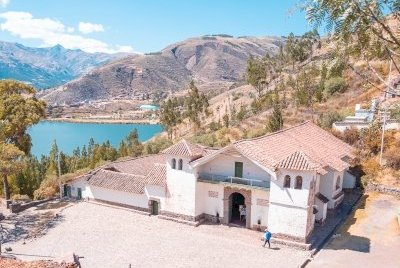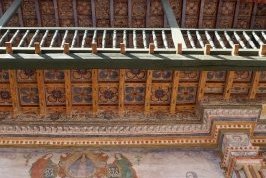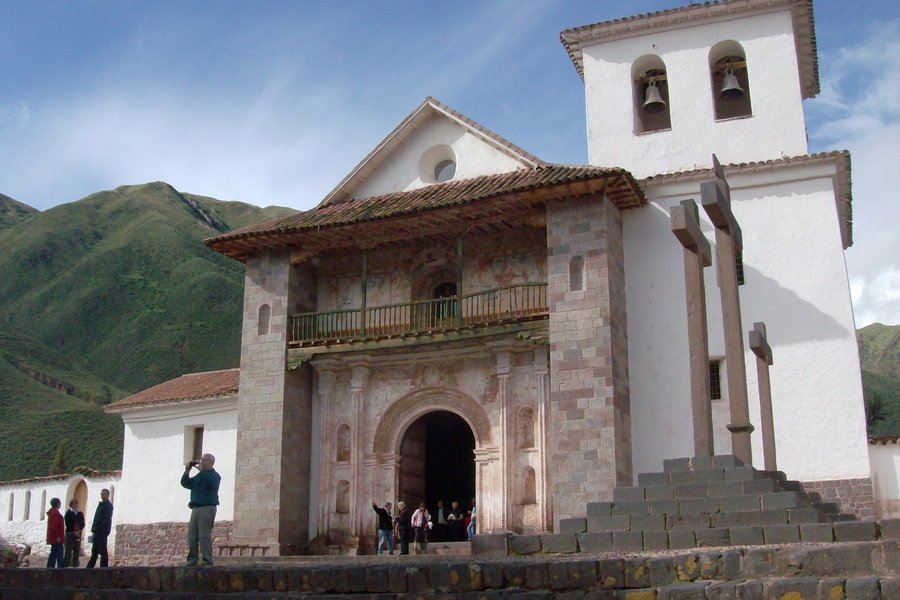Peru
Rural Temples of Cusco
Rural Temples of Cusco is a group of ten churches whose architectural style and artistic components reflect a unique style resulting from the mixture of indigenous and European knowledge and techniques.
These temples contain outstanding examples of paintings, murals and sculptures from the Cusco School of Art. The objective behind the construction of these churches was to impress and educate the indigenous populations in order to foster their evangelization.
Site Info
Official Information
- Full Name
- Rural Temples of Cusco (ID: 6406)
- Country
- Peru
- Status
-
On tentative list 2019
Site history
History of Rural Temples of Cusco
- 2019: Added to Tentative List
- Added to tentative list
- Type
- Cultural
- Criteria
Links
- UNESCO
- whc.unesco.org
All Links
UNESCO.org
- whc.unesco.org — whc.unesco.org
Community Information
- Community Category
- Religious structure: Christian
Travel Information
Recent Connections
News
No news.
Recent Visitors
Visitors of Rural Temples of Cusco
- alex
- Ali Zingstra
- Anne
- Argo
- basementonline
- BaziFettehenne
- Carlo Sarion
- Carlos Sotelo
- Chinmaya
- Christoph
- Christravelblog
- Clyde
- Daniel Gabi
- Delphine Delaunay
- Don Irwin
- emvcaest
- Francky D'Hoop
- HaraldOest
- Hughes1920
- Jacob Choi
- Javier Coro
- Jeanne OGrady
- Joel on the Road
- Kevin McFarland
- Kyle Magnuson
- Ludvan
- Mathijs
- nan
- Patrik
- Pink Bunny
- Piotr Wasil
- Rafabram
- Sandra!
- Shandos Cleaver
- Stanislaw Warwas
- Svein Elias
- Szabolcs Mosonyi
- Tatiana Nikulnikova
- Thomas Buechler
- tony0001
- Wojciech Fedoruk
- Zach
Community Reviews
Show full reviews
One of our day trips from Cusco was spent visiting Valle Sur, located southeast of Cusco, with the intent of hopping between churches and archaeological sites. Said churches belong to the proposed "Rural Temples of Cusco", a group of 10 churches that are said to be the tangible representation of the Christianisation of indigenous peoples of Cusco. Authorities creatively took advantage of the artistic and touristic value of 3 of the 10 "rural temples" that they marketed them to tourists as part of the Ruta Barroco Andino. Many Cusco-based tour companies offer guided full or half-day trips to Valle Sur but we chose to hire our own car and driver so we could customize the sequence of our visit and avoid crowds, as we were visiting during the peak season (Aug 2022).
We left the hotel in Cusco after a hearty breakfast and a couple of soroche pills (Cusco is higher but I was still having symptoms of altitude sickness). How I planned the itinerary was to start at the farthest site and visit the succeeding sites on our way back to the city. Thus, we visited the sites in the following order:
1. Capilla Virgen Purificada de Caninunca in Huaro (see photo):
this dusty, stocky, terracotta-roofed chapel that is located next to a lake (Laguna de Urcos) was locked when we arrived at around 9:30am. Our driver chatted with a vendor who happened to know the caretakers. After a bit of waiting a couple of …
Keep reading 0 comments
Looking for an easy way to travel from Cusco to Puno, I settled on a tourist bus that would make several stops along the way. Itineraries for all companies seem to be quite similar (Andahuaylillas, Inka ruin Raqchi, lunch, mountain pass La Raya). Only stop that I was initially interested in was Raqchi as it's part of the Qhapaq Nan sites.
When we rode into Andahuaylillas (the town) we found a rather sleepy rural town, scenically located below a mountain range. The church is in the city center and from the outside there is little to set itself apart from other churches. However, when we entered the church I was awed. All parts of the interior is richly decorated. The style is named Barroco Andino. It is not a poor reproduction of European ideals, but a unique blend of European ideas with Latin American culture, symbols and heritage. Calling it "Sistine Chapel of the Andes", though, is overstating the case. It's a lovely rural church for and by the local population.
OUV
I am always happy, if my "should be inscribed" post in the forum later materializes with the state party making a proposal. For Peru, I posted in 2017 that Barroco Andino had clear potential:
I have only seen the splendid church of Andahuaylillas and supposedly there are more sites like this. Stellar and unique with the local influences. Again, I would heavily favor inscription of these churches. The artistic level is …Keep reading 0 comments

The Church of San Pedro Apóstol de Andahuaylillas, the "Sistine Chapel of the Andes" was mostly lost to me in 2009. Its hard to appreciate such a structure without information and during a short stop on the way to Puno! Granted, the church does not take much time to explore, its murals and elaborate interior are exceptional. Considering this nomination has 10 components, this can barely be counted as a visit. However, since The Church of San Pedro Apóstol de Andahuaylillas is one of the key properties I though I would write a review.
Between Cuzco and Puno, bus routes could be organized (not current information) to stop at Andahuaylillas and Raqchi for a limited amount of time. As I exited the bus, I appreciated the exterior of the church, but it's something else altogether to cross the threshold into the church where gold and murals await. Unfortunately, I did not take pictures of the interior (or I tried), but the light was poor and the images were immediately deleted because of poor quality. I also remember having battery issues with my camera at the time, leading to a tight economy on pictures!
The proposed nomination may be underwhelming for some, but Peru is under-represented on the world heritage list and even their average tentative list entries are arguably worthy of inscription. Sites like the Church of San Pedro Apóstol de Andahuaylillas were built over a pre-columbian ceremonial space, the emphasis on indigenous murals, and the importance of these churches …
Keep reading 0 comments
